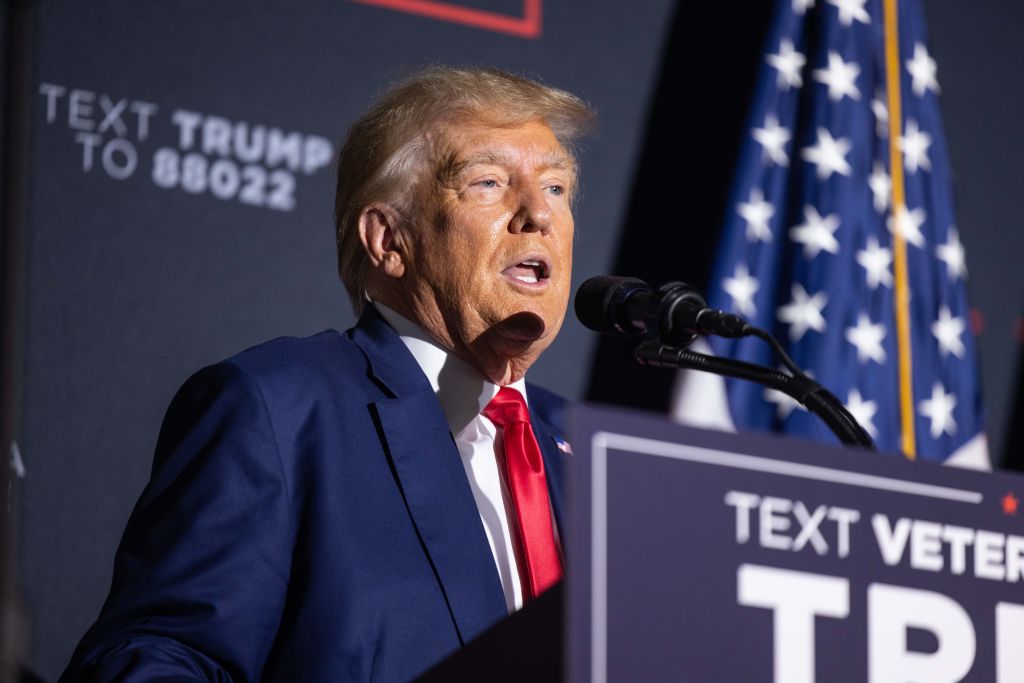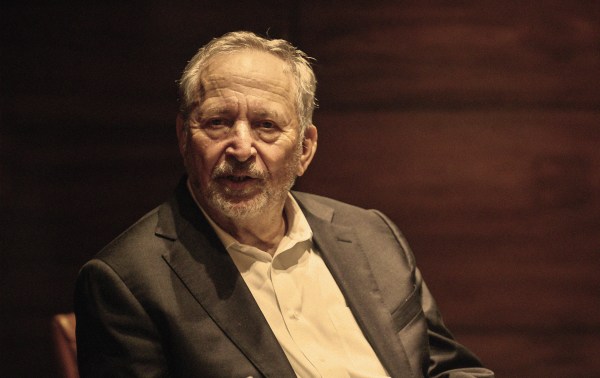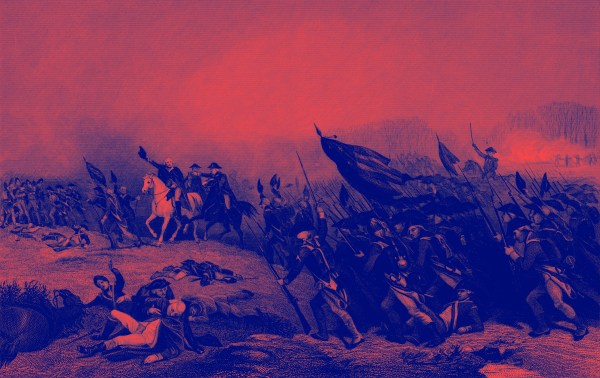There is much to recommend the sprawling 98-page indictment that came out of Fulton County, Georgia, late Monday night. It is meticulous. It is detailed. It presents a narrative of an alleged criminal enterprise that takes the reader on a step-by-step journey around Georgia (and several other states and D.C.) to detail how President Donald Trump and 18 other people tried in concert to keep him in office even though he had lost the election. And District Attorney Fani Willis certainly knew that Count 1 would get everyone’s attention, because this indictment doesn’t just include plain old criminal conspiracy (although there are several of those alleged), this one alleges a RICO conspiracy, too.
The difference between the two is not obvious. First, criminal conspiracy occurs when two or more people agree to break the law, and then one or more of them act to further their agreed-upon criminal objective. If my friends and I plot to rob a bank, for example, and then I go buy us ski masks to use during our robbery, we can be prosecuted for conspiracy to rob the bank—even if we never actually go through with it. And even though, ordinarily, buying ski masks is a perfectly legal thing to do, the agreement to do a crime, plus my step in furtherance of that crime, is the crime itself. And my step in furtherance—buying the ski masks—also just got my friends on the hook for the conspiracy even if they did no more than agree to the plot.
RICO conspiracy is a different animal. Georgia’s Racketeer Influenced and Corrupt Organizations Act is modeled a great deal on the federal RICO law, which was created in 1971 to deal with the ever-vexing problem of prosecuting organized crime, by which I mean the business of crime. As the power of various criminal elements has ebbed and flowed over the years, RICO’s usage has evolved from its original intent—going after the mob—to address other hard-to-prosecute groups like biker gangs, street gangs, sex trafficking rings, and teachers. (More on the teachers later; I promise it’s relevant.) For a RICO prosecution, the crime is joining the “racket” or, to use the legal term, the “enterprise,” through “a pattern of racketeering activity.” Racketeering activity means crimes like murder, arson, and bribery, but also—more to the issues we care about this week—forgery, false statements, witness intimidation, and perjury.
Wrapping all of that together, a Georgia RICO conspiracy occurs when two or more people agree to participate in an enterprise through a pattern of racketeering activity. Unlike for regular conspiracy, the prosecutor doesn’t have to show there was an agreement between the participants to commit a particular crime. Instead, she must show there was an enterprise and that each defendant knowingly and willfully agreed to participate in the enterprise through racketeering. Whether the various participants even knew one another doesn’t matter. What matters is the enterprise and the racketeering acts.
Willis knows a lot about Georgia RICO conspiracy. She’s currently prosecuting Atlanta-based rapper Young Thug under a RICO theory, and she famously prosecuted a group of teachers who had over several years “corrected” student answers on standardized tests to inflate the Atlanta school district’s overall scores, several of them allegedly in exchange for financial compensation. The enterprise there was easy to define: the Atlanta Independent School System, a governmental entity. The racketeering activities charged were false writings, false swearing (as in the phrase “swearing an oath”), and, for some defendants, theft. Willis obtained 11 convictions after trial. A further 12 educators pleaded guilty. Only one was acquitted.
You can probably see an initial problem with the Trump-and-associates indictment now. All 19 defendants are charged with conspiracy to participate in racketeering, but what’s the enterprise? The indictment refers to the defendants as a “criminal organization” associated in fact and having a common object to “unlawfully change the outcome of the election in favor of Trump.” That’s an unusual common goal for an “ongoing” criminal organization, which usually exists for the purpose of continuing the enterprise. And Willis charges that the RICO conspiracy crime, including its underlying racketeering acts, took place between November 4, 2020—the day after the election—and September 15, 2022—the day one defendant is alleged to have perjured himself by lying to the grand jury. It is difficult to look at this and come away thinking there is an ongoing criminal organization at work, and that each of these 19 people knowingly agreed to participate in that criminal organization.
Former White House Chief of Staff Mark Meadows has already zeroed in on that issue. Because he was a federal official at the time of the alleged crimes, he has already filed to move his case to federal court under what’s called the federal removal statute. His argument—which is far from frivolous—is that he was just doing things within the scope of his federal employment, like arranging meetings, contacting state officials for the president, and setting up a phone call. But whether or not Meadows will actually get his proceedings removed to federal court, he’s got a point: He didn’t knowingly agree to join a criminal organization, he agreed to join the West Wing staff. The other defendants—who range from lawyer Rudy Giuliani to Kanye West’s former publicist, Trevian Kutti—will surely raise similar points. (Side note: Kutti was once R. Kelly’s publicist. Last year, Kelly was convicted of … RICO violations.)
One more thing on the RICO charge. After describing the enterprise, the indictment chronologically lists 161 “overt acts” and racketeering activities. As discussed above, the racketeering activities are actual alleged crimes. Acts 79 through 84, for example, describe the fake electors scheme, where some of the defendants created and sent documents purporting to be the certificates of the electoral votes from Georgia. On Willis’ theory, the racketeering crimes here were impersonating a public officer, forgery, false statements, and filing false documents. But these are also counts against these defendants charged later in the indictment, which means that, even if Willis can’t persuade a jury that a criminal enterprise existed, she might still be able to get these defendants on the actual underlying crimes, also known as “predicate acts.”
But many of the overt acts listed in the indictment are not necessarily so sinister. Often (and as humorously pointed out by Trumpian wags on social media and talk radio) the overt acts are things as innocuous as Trump tweeting that his followers should watch a certain cable channel. One of them is Meadows sending a text message asking the Georgia secretary of state to speed up verifying signatures in mail-in ballot envelopes. Obviously, neither of these overt acts (and many more in the indictment) are illegal. But remember, neither was it illegal for me to buy the ski masks in the bank robbery hypothetical. The reason they’re listed is to show that each defendant was taking steps in furtherance of the enterprise.
Moving beyond the RICO charge, the other 40 counts are often quite strong. Trump and his outside lawyer John Eastman, for example, are both charged with filing a false document on December 31, 2020, when they sought an injunction from a federal court to block or delay the electoral count. According to the indictment, this filing contained false statements, including specific numbers of felons and dead people who had voted in Georgia. We already know (because Eastman helpfully conducted this business by email!) that Eastman had on December 1, 2020, informed Trump that those numbers were not accurate.
Similarly, the fake electors scheme is well-documented because they kindly sent a copy of their fake electoral certificate with their signatures to the Archivist of the United States, who posted it on Archives.gov along with the envelope in which it arrived. In case you were wondering, it apparently cost $17.90 to send the fake document via USPS registered mail. For some of the fake electors, that’s going to be the most expensive $17.90 of their lives. (If you’re interested, all of the “unofficial certificates” from the fake electors are posted here.)
Not all of the 40 other counts are as strong. For example, several of the defendants, including Trump, are charged with asking state lawmakers to certify presidential electors for Trump rather than Biden. The specific crime is “solicitation of violation of oath by public officer.” But we don’t ordinarily think of lobbying for certain legislative acts as a crime—even when the legislative act later turns out to be illegal or unconstitutional. Just think of the chaos that would follow every time the Supreme Court found a law unconstitutional. What a gleeful event it would be for all the people who lobbied for an unconstitutional law to be held out as part of a criminal organization and subject to prosecution!
In all, the indictment has a lot going for it. A RICO case is going to be a nightmare for Trump and his co-defendants. And even if a jury does not buy that there was really a criminal enterprise at work, each defendant can still be found guilty of the underlying substantive crimes. My prediction: A lot of these folks are going to prison.






Please note that we at The Dispatch hold ourselves, our work, and our commenters to a higher standard than other places on the internet. We welcome comments that foster genuine debate or discussion—including comments critical of us or our work—but responses that include ad hominem attacks on fellow Dispatch members or are intended to stoke fear and anger may be moderated.
With your membership, you only have the ability to comment on The Morning Dispatch articles. Consider upgrading to join the conversation everywhere.